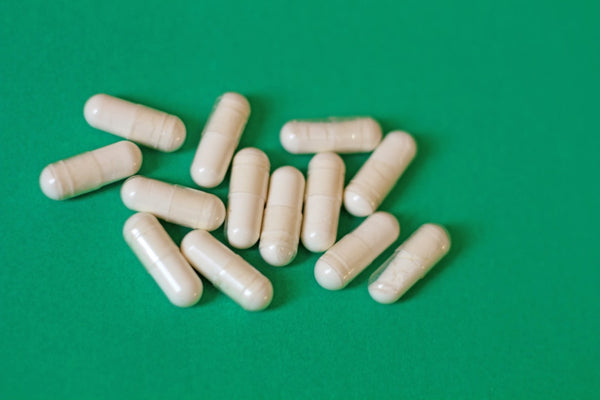Is Your Kid's Energy Linked to Low Magnesium?
share this article

If your little one is consistently lethargic, fatigued, or has lower energy than usual, you might start to get concerned for nutritional deficiencies. Of course, low energy could be caused by lack of sleep, an underlying medical condition, or an increase in activity, but low magnesium could also be playing a role.
Because of magnesium’s role in so many different parts of our body - nerve function, muscle function, bone development - it naturally affects the way your kiddo moves throughout the day. So when levels are low, your child might not feel like their usual energetic self.
Let’s review signs of low magnesium and why this could be contributing to your little one’s lack of energy.
Signs of Low Magnesium
Some kids may have a hard time getting enough magnesium, especially if they are picky eaters, have food aversions, or eat a lot of processed foods.
Kids with underlying medical issues like Crohn’s disease, celiac disease, and type 2 diabetes are at higher risk for magnesium deficiency.
The most common symptoms of low magnesium include (1)
-
Low appetite
-
Nausea or vomiting
-
Fatigue
-
Weakness
-
Numbness or tingling
-
Muscle cramps
-
Heart arrhythmias
It’s always a good idea to confirm magnesium deficiency through a blood test with your child’s pediatrician.
Why Does Low Magnesium Affect Energy?
Magnesium acts as a coenzyme, meaning it helps make reactions happen in the body. Specifically, magnesium helps the body turn the food we eat into energy. Without enough magnesium, this process can slow down and result in your kiddo feeling sluggish and tired (2).
Magnesium also helps insulin, which controls our blood sugar. Low magnesium can interfere with insulin function, leading to blood sugar swings that make energy levels less stable (2).
Lastly, low magnesium can cause muscle cramping. If your child feels uncomfortable but doesn’t know how to verbalize this, they may move less or seem low-energy.
How to Boost Magnesium Levels
If you suspect your kiddo is low in magnesium, try these magnesium-boosting tools to get their energy back to normal.
Increase Magnesium-Rich Foods
Magnesium is generally found in greens, seeds, and nuts. So making sure your kids have one of these types of foods at most meals is a good way for them to get what they need.
Here are some of the highest magnesium-rich foods:
-
Spinach | 157mg per 1 cup cooked
-
Pumpkin Seeds | 156mg per 1 oz
-
Quinoa | 118mg per 1 cup cooked
-
Chia Seeds | 111mg per 1 oz
-
Brown Rice | 86mg per 1 cup cooked
-
Almonds | 77mg per 1 oz
-
Cashews | 74mg per 1 oz
-
Peanuts | 63mg per ¼ cup
-
Black Beans | 60mg per ½ cup
-
Avocado | 58mg per avocado
-
Peanut Butter | 50mg per 2 tablespoons
-
Plain Yogurt | 42mg per 8 oz
-
Banana | 32mg per banana
Monitor Underlying Vitamin D deficiency
If your little one has a history of Vitamin D deficiency, but hasn’t gotten their levels checked recently, excessive vitamin D supplementation could lower Magnesium absorption (3). Stay up to date with your kiddo’s pediatrician to make sure they’re only taking the supplements they need.
Balanced & Varied Diet
A healthy gut helps with nutrient absorption, including magnesium (4). A diet that includes plenty of fiber from fruits, vegetables, and whole grains supports a strong gut microbiome and better mineral absorption.
Summary
Your little one’s low energy might be related to low magnesium. Because of magnesium’s role in energy production, blood sugar regulation, and muscle function, ensuring you serve magnesium rich foods, assess underlying nutrient deficiencies, and focus on an overall balanced diet can help get your kiddo’s energy back on track.
















